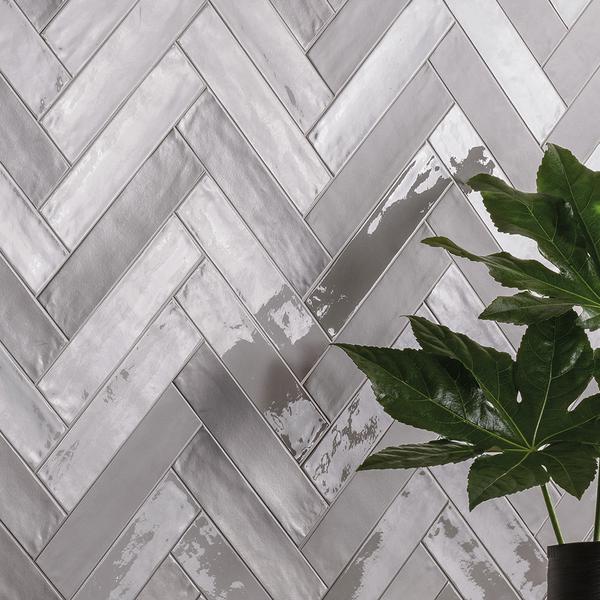Totalook: interview with the designer
Are ceramic tiles sustainable? Ecology and sustainability are two key topics of the moment, also in design. This can lead to the question of what are the best choices we can make in terms of eco-compatible development. Thanks to their duration, easy maintenance and high resistance to various internal and external stresses, ceramic tiles perfectly embody the idea of sustainability in an industry where they are the leading product.
Ceramics proves to be one of the most sustainable choices for floors and walls but also for bathroom and kitchen tops. An environmental impact study that measured the entire life cycle of ceramics (Life Cycle Assessment) found that this is the material with the lowest environmental impact in the field of floor coverings.
What is more, designers, builders and contractors know they can rely on the high standards required by ISO 17889-1:2021 standard (International Organization for Standardization).
Ceramics - from the Greek kéramos, clay - is undoubtedly a very broad field, encompassing all products resulting from the processing and firing of clays and other aggregate materials such as kaolin, feldspar and sand. The final products may be different (stoneware, porcelain, terracotta or majolica) although they are all characterized by specifications such as strength, durability, non-deformability and complete recyclability. It is therefore fair to say that ceramic tiles are sustainable, considering their durability and recyclability. Let's delve into and better understand the different types of ceramics, which are the most virtuous materials for floor coverings, and their use with a view to a synergy between environmental, social and economic well-being.
Known for its centuries-old artistic tradition, porcelain can also boast excellent technical specifications such as robustness and water resistance. It also proves to be the ideal choice from the point of view of sustainability for ornamental and decorative elements and vertical surfaces where stresses are less concentrated.
However, due to its resistance to different types of stresses and external agents, the top eco-friendly tile flooring is stoneware. Inspired by hand-spread cement resin, Pigmento by Ergon is the tile collection that manages to combine performance and color, shape and atmosphere. A complex fusion of material and color suggestions to decorate the rooms of the home with enveloping backgrounds, textures with a marked three-dimensional character and wallpaper effect slabs.
To be able to define a sustainable tile, its entire life cycle and lifespan should be taken into account. The production process of porcelain stoneware starts with the selection of raw materials such as clays and sand, which are then ground and spray-dried. Size, shape and thickness may vary while the constant that all porcelain stoneware tiles have in common is durability, making them the perfect choice because they are resistant to scratches and abrasions, as well as waterproof.
The advantages of porcelain stoneware are manifold. As the name suggests, the stoneware tile is extremely compact, a characteristic that makes it exceptionally resistant to impacts, stains and damage. What is more, it retains heat evenly and returns it to the room gradually, a factor of decisive importance in under-floor heating systems.
An eco-friendly tile flooring merges beauty and sustainability. A natural material that has recently made a name for itself in the world of covering is cork: extracted from the bark of Mediterranean oak trees, it auto-regenerates every three years. Often chosen by green building project designers, it is a recent substitute for wood, long considered the top environment-friendly material for parquet flooring. Other sustainable flooring materials include natural stone (such as marble and granite) and cotto, which is 100% natural and easily recyclable.
For both surface and floor coverings, stoneware eco-friendly tiles are a rewarding choice: they are versatile, made from recycled and recyclable materials, with almost unlimited duration.
The Sixty collection by Emilceramica pays tribute to clay, returning to its origins and drawing inspiration from the bare earth. Sustainable floor tiles that combine aesthetic refinement with top technical performance. Softness and slip resistance become integral parts of the material thanks to SilkTech technology.
Aesthetics, resistance and sustainability. Re-Play Concrete is the Provenza collection inspired by industrial architecture, becoming the ultimate expression of a material resistant to loads and all types of weathering. The catalogue offers a selection of concrete-effect porcelain stoneware tiles that combine refinement and reliability with high design potential.
Respect for the safety and healthiness of the environments where we spend most of our time is fundamental. First of all, Emilgroup products are Greenguard certified, guaranteeing very low levels of volatile organic compound (VOC) emissions, and Greenguard Gold certified, for sensitive environments requiring even stricter limits.
Emilgroup has always cared for the environment and sustainability, with regard to both the production process and the finished product. Since 1982, thanks to a closed-loop system, all industrial water from the factories has been purified and recycled, thus never released into the environment.
We consider the entire life cycle of stoneware, starting with the quarrying of raw materials and ending with the proper disposal or recovery to assess the environmental effects. Emilgroup products are made from selected clay, feldspar, sand and inorganic pigment from authorized quarries and following environmental restoration plans. Unfired waste and ceramic sludge are recovered and recycled in accordance with specific authorizations. This allows us firstly to reduce the quarrying of virgin raw materials and secondly to reduce transport-related emissions. An all-round focus, from ceramic surfaces to the depths of global issues.
05 December 2022
From our blog
